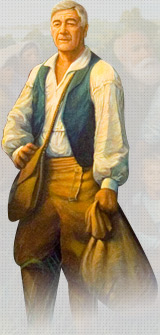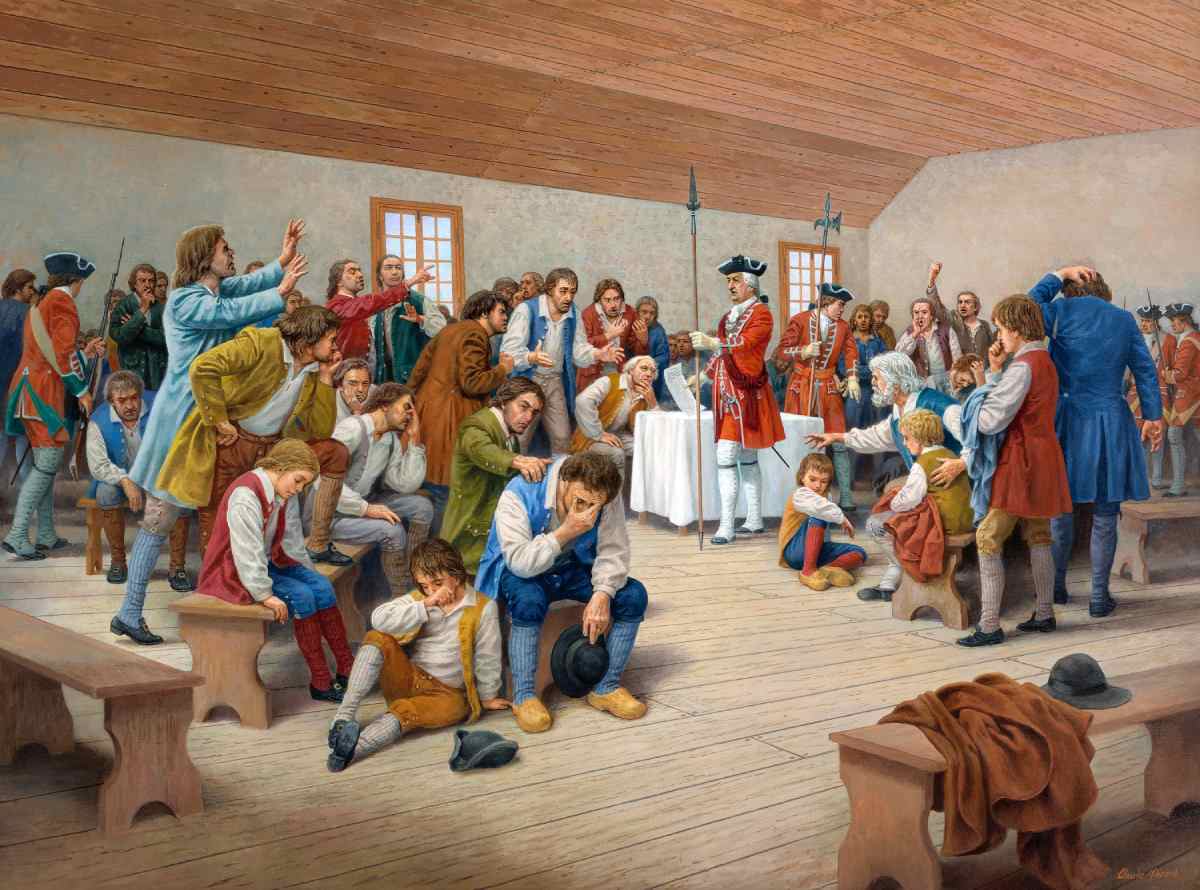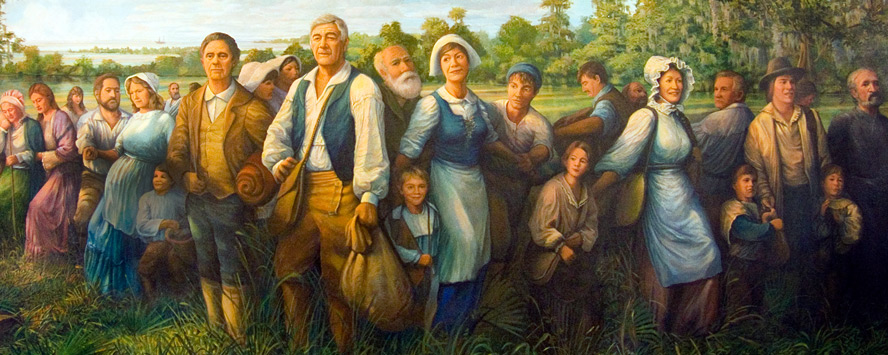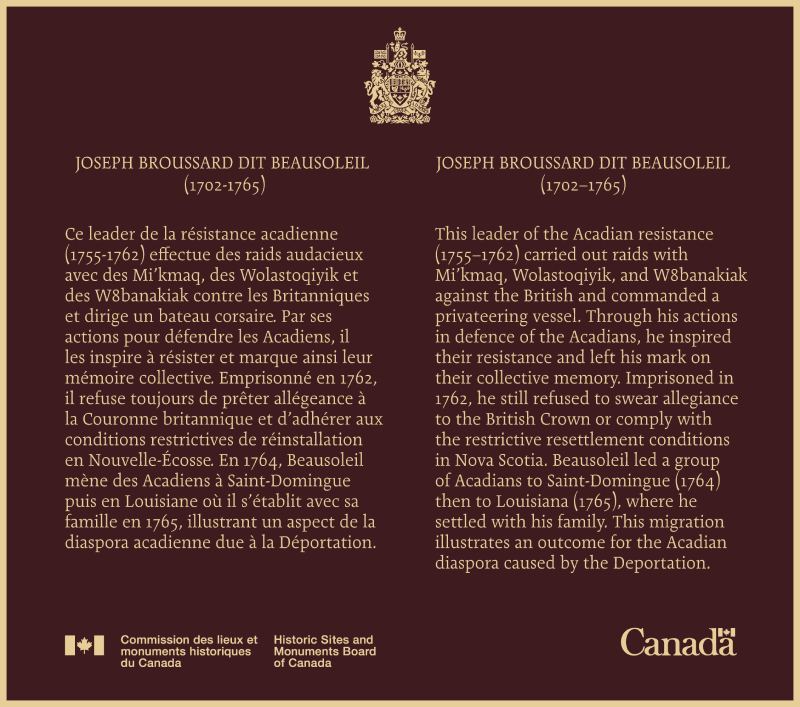Joseph Broussard dit Beausoleil (1702–1765) National Historic Person
Joseph Broussard dit Beausoleil was designated as a national historic person in 2022.
Historical importance: leader of the Acadian resistance before, during and after the 1755 Deportation.
Commemorative plaque: will be installed at Parc du Mascaret, 10 cour Bendview, Moncton, New BrunswickFootnote 1
Joseph Broussard dit Beausoleil (1702–1765)
This leader of the Acadian resistance (1755–1762) carried out raids with Mi’kmaq, Wolastoqiyik, and W8banakiak against the British and commanded a privateering vessel. Through his actions in defence of the Acadians, he inspired their resistance and left his mark on their collective memory. Imprisoned in 1762, he still refused to swear allegiance to the British Crown or comply with the restrictive resettlement conditions in Nova Scotia. Beausoleil led a group of Acadians to Saint-Domingue (1764) then to Louisiana (1765), where he settled with his family. This migration illustrates an outcome for the Acadian diaspora caused by the Deportation.

© Acadian Memorial Foundation
Joseph Broussard dit Beausoleil (1702–1765)
Born in Port-Royal in 1702, Joseph Broussard dit Beausoleil was a key figure in Acadian history and holds an important place in the collective memory of Acadian communities in both Louisiana and the Maritime provinces. During the mid-18th century, he became a leader of the Acadian resistance and defiance against British rule. Beausoleil conducted bold raids with Mi’kmaq, Wolastoqiyik, and W8banakiak against settlements, troops, and military posts. He commanded a privateering vessel and avidly defended his compatriots, helping them to escape deportation and inspiring them to resist. After the Treaty of Paris in 1763, which granted Great Britain colonial possession of Acadia, Beausoleil still refused to swear an oath of allegiance to the British Crown and comply with the restrictive conditions of resettlement imposed in Nova Scotia. In 1764, Beausoleil led a group of Acadian families to Saint-Domingue, a French colony, and then to Louisiana in 1765, illustrating one of the outcomes of the Deportation for the Acadian diaspora.

© Parks Canada
In the 17th and early 18th centuries, Mi’kma’ki, the traditional homeland of the Mi’kmaq, was claimed by both French and British colonial interests. The French and British fought for control of land, trade, and fisheries as the Mi’kmaq defended their homeland through both diplomacy and military action. After the 1630s, French settlers, known as Acadians, established farms and created communities in the region, which became known as Acadia. A war between European powers was partially resolved in 1713 by the Treaty of Utrecht, which resulted in France ceding its claim to mainland Acadia to the British. Some Acadians, including Joseph Broussard dit Beausoleil, refused to recognize the authority of the British Crown over Acadia.

© Acadian Memorial Foundation
In 1747, Beausoleil and 12 other Acadians were declared “outlaws” for aiding the French in battles against the British, including the Battle of Grand-Pré. Over the next few years, Joseph and Alexandre, the Beausoleil brothers, led several raids with other Acadians and Mi’kmaq against patrolling British soldiers, intercepting convoys and attacking small British Protestant settlements such as Dartmouth. In June 1755, Beausoleil led a group of Acadians during the siege of Fort Beauséjour. He was jailed at Fort Lawrence in the fall of 1755 but escaped with a group of 80 other Acadian prisoners. In the years that followed, Beausoleil commanded a schooner converted into a privateer and took part in the guerrilla warfare waged by the Acadian resistance, the French, the Mi’kmaq, the Wolastoqiyik, and the W8banakiak against the British. He was again imprisoned in 1760 and remained in captivity until after the signing of the Treaty of Paris, which ended the Seven Years’ War in 1763.

“Joseph Broussard dit Beausoleil is the embodiment of the Acadian spirit of resistance. He is a figure whose actions go beyond the borders of Acadia and who played a crucial role in the survival of the Acadian people in Canada and Louisiana. His name will also be remembered as it gave birth to a very famous musical group in Acadia (Beausoleil-Broussard).”
After 1763, the British imposed conditions on the Acadians for their re-establishment in the colony. Deeming these conditions to be unacceptable and still refusing to swear allegiance to the British Crown, Beausoleil and 600 Acadians chartered a ship and left for Saint-Domingue (now Haiti), in December 1764. In February of the following year, Beausoleil and 193 Acadians again chartered a ship for the Mississippi River and decided to settle in Louisiana. They received land in the Attackapas region, where they raised cattle. In April 1765, Beausoleil was appointed militia captain and commander of the Acadians in the Attackapas region. In October 1765, Joseph Broussard dit Beausoleil died from a yellow fever epidemic that struck the community.
This press backgrounder was prepared at the time of the plaque unveiling in 2024.
The National Program of Historical Commemoration relies on the participation of Canadians in the identification of places, events and persons of national historic significance. Any member of the public can nominate a topic for consideration by the Historic Sites and Monuments Board of Canada.
- Date modified :